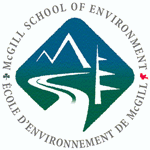
| »Themes |
| »Context |
| »Methods |
| »Results |
| »Applications |
| »Geostatistics |
| Conclusions |
| »Downloads |
| »Interact! |
| »Contact |
|
Conclusions The objective of this project was to conduct a preliminary assessment of ecosystem vulnerability to climate change in Panama. The final results include both a set of maps from which spatial information (including specific information on ecosystem patches and trends) can be extracted and an analysis of the EVCC in terms of applications relevant to conservation. This project can be valuable for the conservation of biodiversity of Panama as well as other regions, because we provide a framework to build EVCC assessments in areas with similar GIS data. There are some issues that should be addressed and a number of uncertainties that need to be accounted for when applying the EVCC in policy-making. We outline some of them here.
In general, studies like this performed in GIS should be used as indicators of where further research or conservation efforts should be directed. These results cannot replace on-sight situation analyses, but such projects can at least pinpoint locations of high concern. It is essential to use a comprehensive framework to address uncertainty in data and theory, especially in areas like climate change where these uncertainties are high. All things considered, the EVCC index has the potential to be a very interesting tool for conservation and ecology. It is very much a work-in-progress and is flexible in adapting to new understandings of our ecosystems and climate change.
|
|
Conclusions
|


